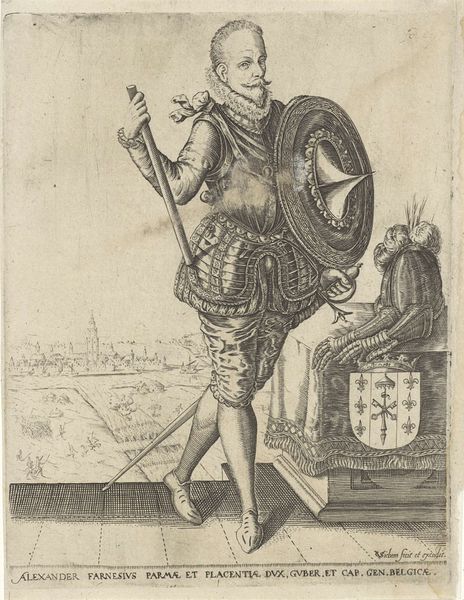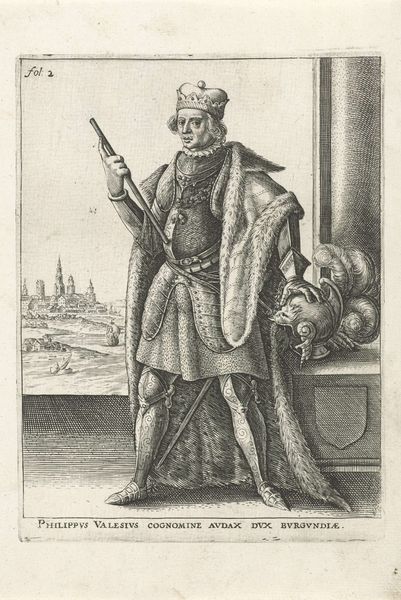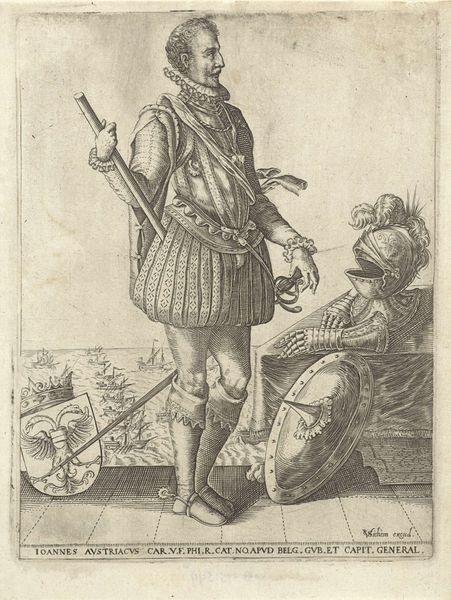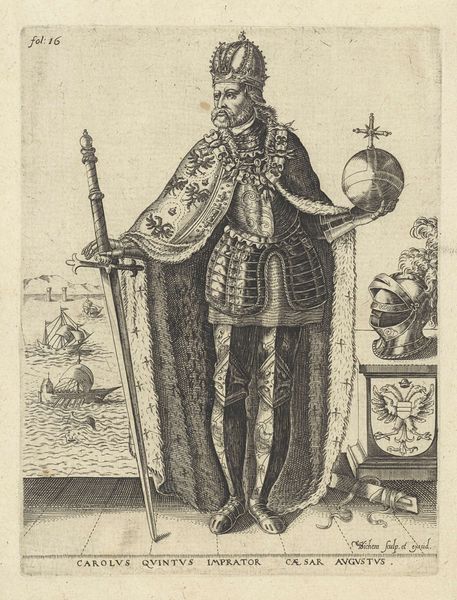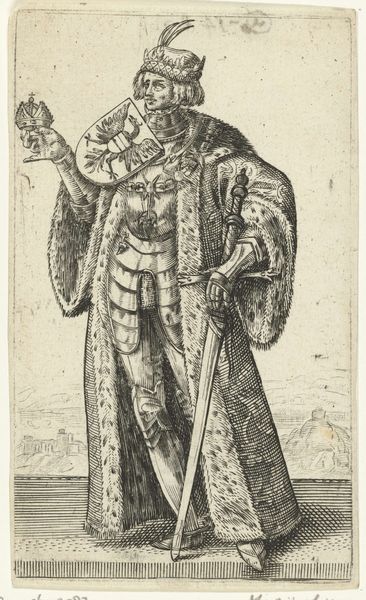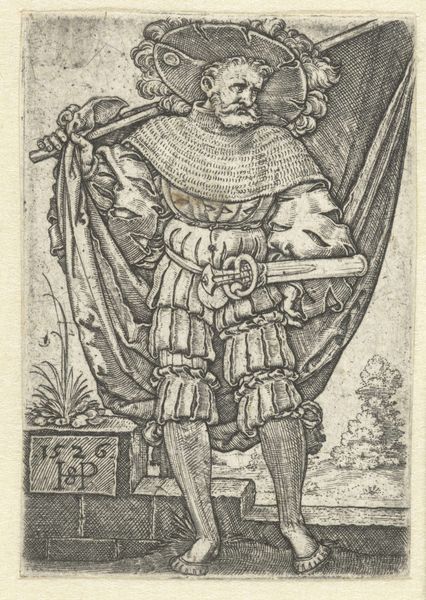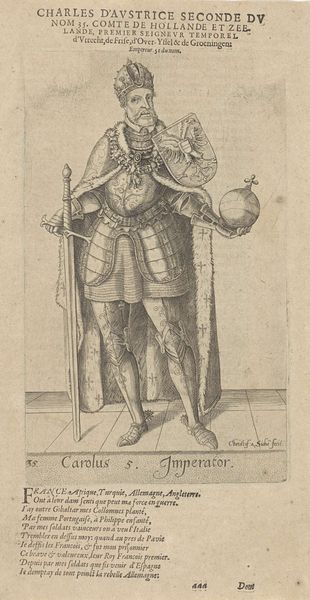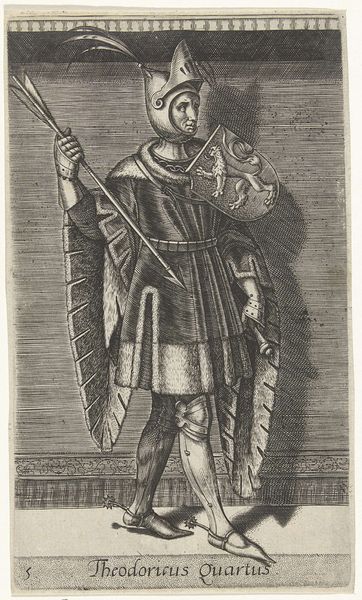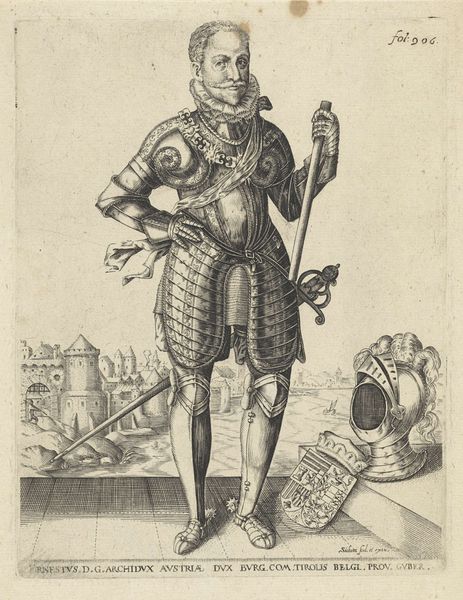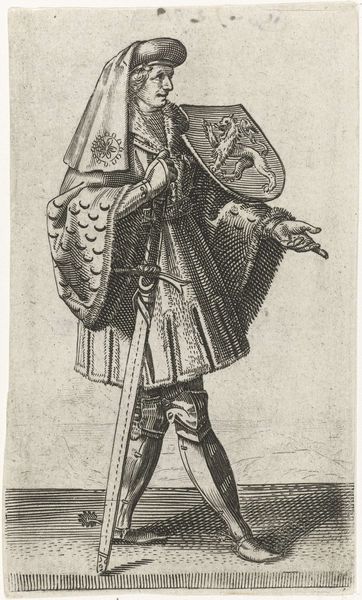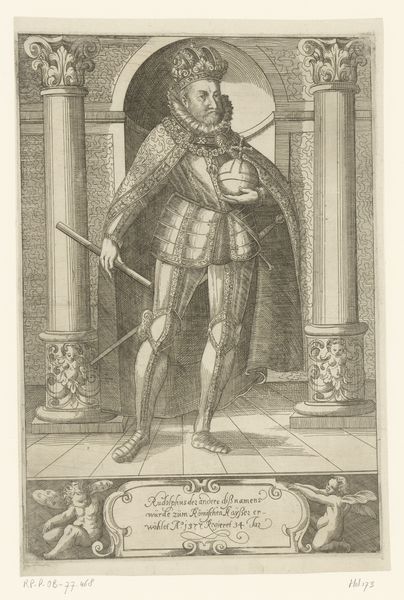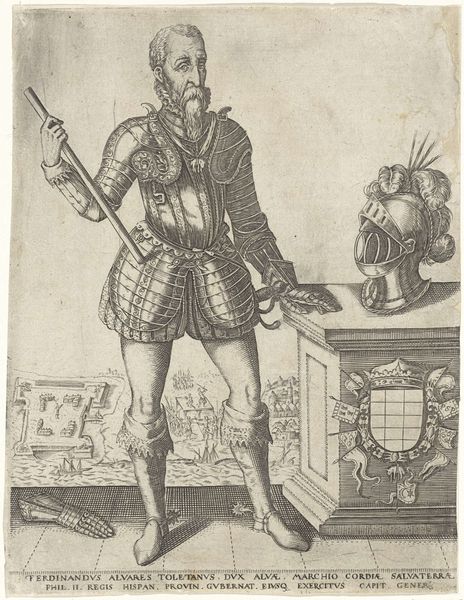
Portret van François-Hercule de Valois, hertog van Anjou 1626
0:00
0:00
christoffelvansichemi
Rijksmuseum
engraving
#
portrait
#
baroque
#
figuration
#
portrait drawing
#
history-painting
#
academic-art
#
engraving
Dimensions: height 188 mm, width 142 mm
Copyright: Rijks Museum: Open Domain
Curator: A somewhat unsettling impression, this portrait… cold, stark even. Is that the effect of the monochromatic scheme? Editor: We are viewing "Portret van François-Hercule de Valois, hertog van Anjou", a baroque engraving by Christoffel van Sichem I created in 1626. It is currently held at the Rijksmuseum. It seems to offer us a visual shorthand to power. Curator: Absolutely, it speaks of power, though there’s also a curious vulnerability. Look at the sheer amount of heraldic markers displayed here, everything meticulously documented, seemingly needing to confirm the subject's identity through repeated symbolic cues. We find emblems worked into his costume, and a sculpted family crest right beside him. What purpose might these signals be designed to fulfill? Editor: Those symbols root the subject within a known historical narrative. The fur trimming, the helmet, the spear-- each is a piece of a constructed visual rhetoric. Yet, observe how the formal lines of the piece contribute to a flattening effect. The values range and overall detail work renders depth moot. The background cityscape recedes into a sort of decorative backdrop, divorced from the imposing figure, who is thereby thrown even more completely into visual prominence. Curator: And he stares directly out at us. Do you read anything into that, formally? Beyond pure acknowledgement, does it carry a deeper weight? The weight of self-conscious royalty, perhaps? Editor: The direct gaze positions the viewer in direct contact with power, yes. A carefully constructed image; every single visual element exists to communicate a very clear sense of legitimate authority, carefully curated identity. Notice the somewhat repetitive circular motifs--the collar of jewels, the spherical forms in the heraldic shield, which create unity. Curator: Given this meticulous rendering, what does the slightly anxious, or perhaps wary, look on his face suggest? This small variance complicates an otherwise very rigid semiotic system. Editor: A crack, maybe? Acknowledgment of the inherently unstable nature of power, of its reliance on symbolism? Perhaps it's the acknowledgement that representation is always a performance, however convincingly staged. Curator: Thank you. It is interesting how, by observing how power presents itself we gain new insight. Editor: My pleasure. I think taking time to consider the role each component plays in contributing to this representation of baroque nobility is a useful exercise for better visual literacy.
Comments
No comments
Be the first to comment and join the conversation on the ultimate creative platform.
